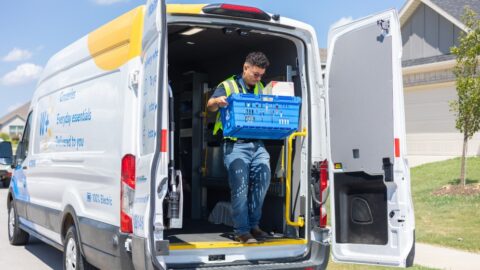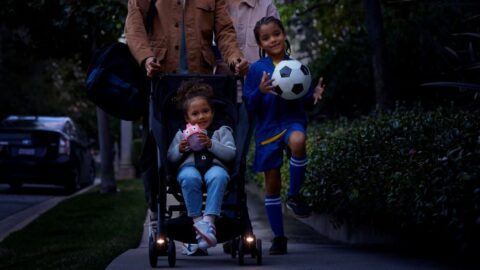 In 2018, Ernst & Young (EY) launched an ambitious project called FutureConsumer.Now, to model scenarios that would challenge present thinking about future consumers. Two years later, as consumers adapted to shutdowns designed to stem the spread of COVID-19, EY recognized that the speed of consumer transformation had greatly accelerated and that new research was needed, explained Jeff Orschell, EY’s Americas Retail Leader and Global Account Leader, in an interview with Retail TouchPoints.
In 2018, Ernst & Young (EY) launched an ambitious project called FutureConsumer.Now, to model scenarios that would challenge present thinking about future consumers. Two years later, as consumers adapted to shutdowns designed to stem the spread of COVID-19, EY recognized that the speed of consumer transformation had greatly accelerated and that new research was needed, explained Jeff Orschell, EY’s Americas Retail Leader and Global Account Leader, in an interview with Retail TouchPoints.
For example, in June, three months after the shutdowns began, 42% of respondents said the way they shop will fundamentally change as a result of the outbreak. To chart the attitudes and behaviors that will redefine consumer purchasing in the coming years, EY asked survey participants to imagine life when the pandemic is just a memory. With that data, EY identified five customer segments that are likely to emerge in its most recent study:
- Health-first (28%): These consumers prioritize their personal and families’ health and need to be able to trust brands to be safe and transparent;
- Affordability-first (28%): These consumers are more cost-conscious and less brand-loyal;
- Society-first (16%): These consumers are purpose-driven and want proof that retailers and brands are considering the needs of society and the community, as well as profits;
- Planet-first (15%): These consumers are led by concerns about the environment and lessening the impact of consumerism and waste on the earth; and
- Experience-first (13%): These consumers focus on how they feel about purchases and activities and are always looking for what’s new.
Orschell discussed the differences and overlaps among these consumer segments as well as other recent research.
Retail TouchPoints (RTP): What implications do the five emerging customer segments have for retailers as they plan for a post-pandemic future?
Advertisement
Jeff Orschell: The big thing for me is that we all need to stop thinking about selling something to somebody, and think about how we can fulfill and enrich the lives of the people we’re serving.
The affordability-first group is not brand-loyal. They’re looking for the best deal and are probably going to use the web to do price shopping. That means retailers have to be transparent with their pricing, but they can go further. For example, a retailer could allow the consumer to compare other retailers’ prices on their sites, like the price comparison tools insurance companies advertise. That would be a service price-sensitive consumers couldn’t get anywhere else.
The health-oriented group wants to make sure that whatever they are buying is good for their own bodies and their families’. These consumers will use the web for research as well as shopping, so retailers should give them content and experiences that will help them live healthier lives. For example, they could post videos from fitness or nutrition experts or help them find local fitness fairs.
The society-first and planet-first groups are purpose-oriented. One is more focused on the greater good for society, and the other wants to make sure we take care of the earth. Among all the consumers we surveyed, 34% indicated that they would pay more for local products, 25% for trusted brands and 23% for ethical products.
An important takeaway for retailers is that both of these segments are comfortable consuming less. If retailers have to respond by offering smaller assortments, how will they gear their operations to remain profitable?
Finally, the experience-first group is more focused on themselves. This segment also is the most likely to continue to shop in physical stores, so retailers can design their stores and the activities within their stores with experience-seekers in mind.
RTP: The Future Consumer Index also identifies some retail trends. Which retail trends identified in the Future Consumer Index do you think are most pertinent?
Orschell: For me, there were three surprises. The first is how much impact the pandemic has had on digital retail in a very short time. Look at grocery: going into COVID-19, online represented less than 10% of food sales. That number jumped to about 45% in a matter of weeks.
What is concerning for traditional retailers is that while consumers want to get back to spending like they did before the pandemic, many of them don’t want to go into stores. For example, only 51% of respondents said they would feel comfortable shopping in a clothing store. This means brick-and-mortar retailers must prioritize making customers feel extremely safe and confident in their stores.
The second surprise is the widespread adoption of online shopping across generations. During the pandemic, the greatest growth in e-Commerce use was by baby boomers and those aged 75 and older. This shows me that retailers can no longer just target the Generation Z and Millennials when they develop their digital strategies.
The third surprise is that trust is the new currency for retailers. Authenticity, honesty, clear labeling and transparent origin have become the three most important factors in consumer purchasing behavior. We found that 87% of consumers say having transparency into the source of a product is important. To build trust in what they sell, retailers will need to provide greater visibility into what goes into a product and how it’s made. One implication is that more products will need to be sourced, grown or manufactured close to where the consumer is.
RTP: You recently met with a group of retailers. What was on their minds?
Orschell: The big topic was how to build out buy online, pick up in-store (BOPIS) and curbside pickup capabilities. We’ve seen a surge in curbside pickup and home delivery from stores. Contactless is a huge driver of that because, as I mentioned, consumers are hesitant to go back into physical stores.
Some retailers were slow to build out an omnichannel infrastructure because that takes capital. When the pandemic hit, those retailers needed to get in the game quickly, almost regardless of the expense. Once they’ve done that, they will be able to step back and figure out how to make it more profitable and sustainable.
There are several different models out there that allow retailers to be judicious with their spending. For example, some are only opening stores when they can cover their costs. Otherwise, they can offer curbside pickup only, or use a dark store as a mini distribution center for e-Commerce and delivery orders. They can revisit these decisions from week to week as consumers show them how and where they want to shop.















